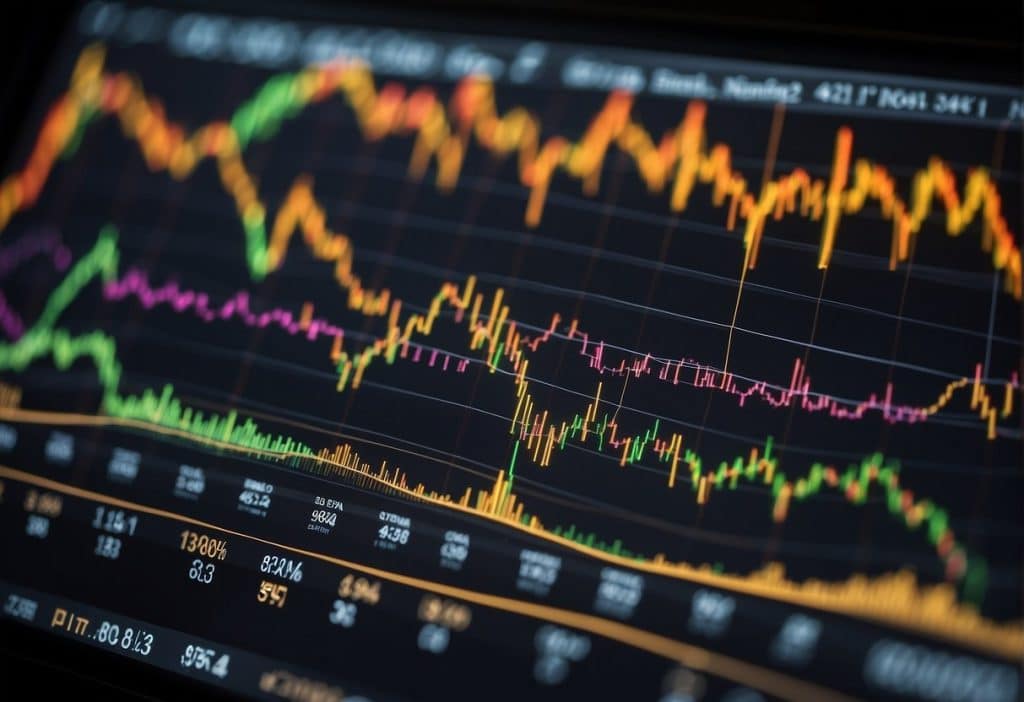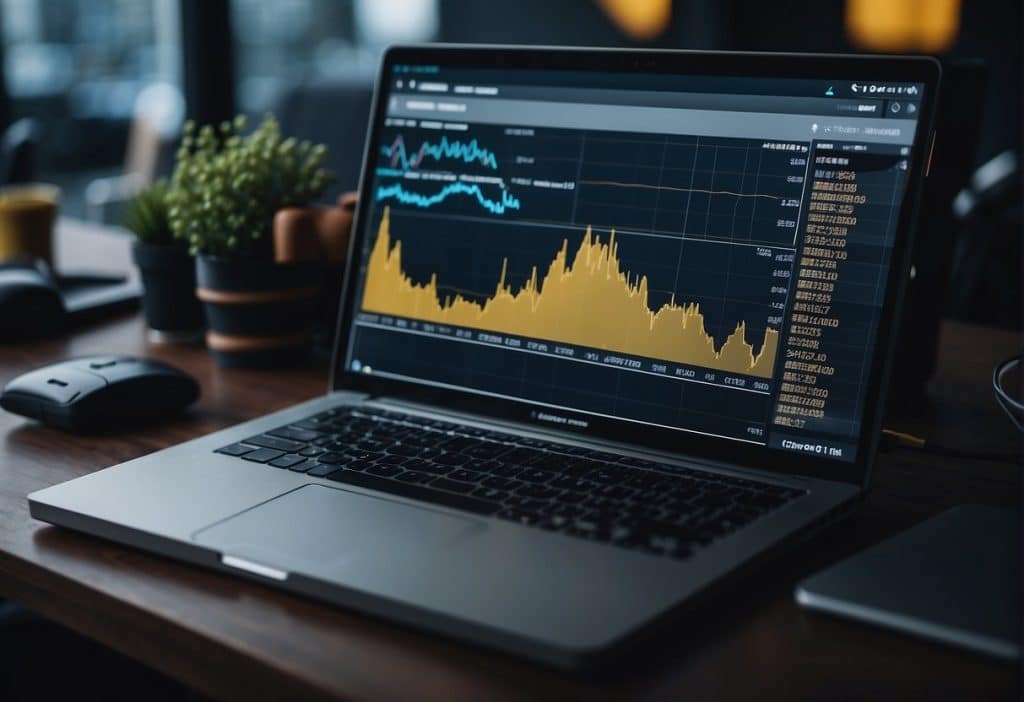The Binance Funding Rate is an integral mechanism within the crypto futures market, vital for traders who are looking to understand the nuances of perpetual contracts. This rate is essentially a recurring fee paid or received by traders who hold futures positions on the Binance Exchange, and it ensures the futures prices stay aligned with the underlying spot prices. It’s recalculated every eight hours and can be indicative of market sentiment, as it may reflect whether more traders are longing or shorting a cryptocurrency.

Understanding the intricacies of the Binance Funding Rate is crucial if you’re involved in trading on Binance Futures. It serves as a tool to balance the market and can represent a trading opportunity or a risk, depending on its value at the time of contract settlement. Grasping how this rate affects your positions and monitoring the funding rate trends can offer insights into market expectations and help in developing more informed trading strategies.
Key Takeaways
- The Binance Funding Rate is a fee that aligns futures prices with spot prices.
- It is recalculated cyclically and reflects broader market sentiment.
- Comprehension of this rate is essential for informed trading on Binance Futures.
NOT YET A BINANCE USER?
Join today with the Binance Referral Code for exclusive benefits or read our Binance Review to learn why Binance is the right exchange for you!
GET UP TO 50% OFF TRADING FEES WITH THE CODE “WUPBLUYN”
Understanding Funding Rate
In the realm of cryptocurrency futures, grasping the concept of funding rates proves crucial for effective trading, as these influence your positions and potential profitability.
Concept of Funding Rate
Funding rates are the periodic payments that you, as the holder of a perpetual futures position, exchange with another trader holding the opposite position. When you are in a long position, it means you are betting on the price increasing. Conversely, a short position implies that you speculate the price will fall. Funding rates aim to align the perpetual futures prices with the spot market prices.
Funding Rate Calculation
The funding rate is calculated using a formula:
\[ Funding Rate = Interest Rate - Premium Index \]
This formula encapsulates a fixed Interest Rate and a variable known as the Premium Index, which reflects the difference between perpetual contract markets and the spot price. For most exchanges, this rate is settled typically after every eight hours, but frequency can vary. The amount you pay or receive will directly depend on whether the funding rate is positive or negative, indicating the market’s bias towards long or short positions.
Impact on Trading
Funding rates can significantly affect your trading profitability on futures positions.
- Positive Funding Rate: When the funding rate is positive, long position holders pay short position holders. This usually signifies a bullish market sentiment.
- Negative Funding Rate: Conversely, a negative funding rate means short position holders pay those in long positions, often indicating a bearish market trend.
- Liquidation Risk: High funding rates may increase the risk of liquidation for leveraged positions if the market moves unfavorably and you do not have sufficient margin to cover the fees.
- Strategic Trading: Savvy traders may use funding rates as indicators to gauge market sentiment and make informed trading decisions. For example, consistently high funding rates might drive some traders to take short positions, betting that the market will correct and align with the spot prices.
Your profitability in futures trading can be influenced by being cognizant of these rates, and paying attention to changes can serve as a strategic trading signal.
Binance Funding Rate Mechanism
The Binance Funding Rate Mechanism is designed to keep the perpetual futures contract prices tethered to the underlying asset’s market price. This alignment is achieved through periodic payments exchanged between long and short traders, known as funding fees.
Binance’s Approach to Funding
At the core of Binance’s approach to funding is a fixed interest rate of 0.03% daily, which translates to 0.01% per funding interval. However, for certain contracts like those involving BNB (BNBUSDT and BNBBUSD), there is no interest rate applied. The funding rate varies as it compensates for the price gap between the perpetual contract and the mark price, thus maintaining a stable exchange that fairly represents the spot market value.
To provide a practical perspective, you might encounter a situation where, for a $100,000 position on Binance Futures, a trader pays a funding fee of approximately $9.4. This is significantly lower compared to average industry rates, which could be 10-20% higher on different platforms.
Real-Time Funding Rate Tracking
Real-time tracking of the funding rate is essential for traders who engage in Binance Futures. The Binance API facilitates this by providing access to live data, which includes the current funding rate applied to various contracts, historical BTC funding rate charts, and other relevant market statistics.
You can utilize the API to fetch this time-sensitive information, allowing you to make informed decisions. The mechanism ensures that there is a continuous adjustment in the funding rates, promoting market equilibrium and fostering a fair trading environment. Here’s an example of how data might be displayed:
| Contract Type | Current Funding Rate | Interest Rate | Premium Index |
|---|---|---|---|
| BTC Perpetual Futures | 0.0100% | 0.03% Daily | Varies |
| BNBUSDT | 0.0067% | 0% | Varies |
This table gives you a snapshot of the funding rates applied to different contracts at a specific time, which could help in making strategic trading moves.
Trading on Binance Futures

Binance Futures allows you to trade perpetual futures with leverage to amplify your profit potential, though it is important to manage risk appropriately to avoid liquidation.
Starting with Perpetual Futures
When you start trading perpetual futures on Binance Futures, you’re essentially engaging in contracts that, unlike traditional futures, don’t have an expiry date. This means you can hold a position for as long as you like, mirroring the spot market price movements. To begin, you’ll need to transfer funds to your futures account, selecting the appropriate leverage for your strategy. Here’s a basic step-by-step:
- Transfer funds to your Binance Futures account.
- Choose the perpetual futures contract you wish to trade.
- Select your desired leverage.
- Execute your trade and monitor the liquidation price.
Risk and Leverage Management
Managing risk is crucial when trading on Binance Futures due to the amplified effects of leverage. High leverage can lead to significant profit but can also result in substantial losses, potentially leading to the liquidation of your position if the market moves against you. Here are key points to consider:
- Use stop-loss orders to mitigate risk.
- Regularly monitor your positions for margin balance.
- Utilize hedging strategies to protect against unfavorable price movements.
| Aspect | Description |
|---|---|
| Leverage | Allows you to control a larger position with a smaller amount of capital. |
| Profit/Loss | Directly proportional to the size of your position and market movement. |
| Liquidation Price | The market price at which a position is automatically closed if the price moves against it. |
| Risk Management | Involves careful assessment of leverage, constant market surveillance, and using tools like stop losses. |
| Hedging | Opening a position to counterbalance potential losses on another position. |
Always remember that while leverage can increase profits, it also raises the stakes for potential losses. Effective risk management techniques are essential to protecting your capital.
Market Analysis and Indicators

As you navigate the world of crypto futures, understanding market indicators, such as the Binance funding rate, is crucial to gauge the current market sentiment and the balance between long and short positions.
Interpreting Market Conditions
The funding rate on exchanges like Binance is an indicator of the market’s leverage bias. A positive funding rate implies that long positions pay short positions and typically occurs when the market expects the price of assets like BTC or ETH to rise. Conversely, a negative funding rate suggests that shorts pay longs, signaling that the market might think the asset’s price will fall.
These rates also reflect the difference between perpetual contract prices and the spot market, guiding you towards understanding whether the market is leaning bullish or bearish. Keep in mind that when futures trading volume and open interest are high, the funding rate’s influence on the market price can be more pronounced.
Long and Short Position Metrics
When you’re considering long and short positions, funding rates are a direct metric to consider, especially in terms of cost for maintaining the position. Here is how you can interpret these metrics:
- Long Position Costs: If the funding rate is high, holding a long position will cost you more, suggesting an overcrowded long market.
- Short Position Costs: If the rate is negative, it costs to hold a short position, which could imply market pessimism or an overcrowded short market.
Table 1: Sample Comparison of Funding Rates
| Asset | Funding Rate | Long Position Cost | Short Position Cost |
|---|---|---|---|
| BTC | 0.01% | High | Low |
| ETH | -0.01% | Low | High |
The funding rates can change every 8 hours, so it’s essential to monitor them regularly and analyze the costs associated with your positions accordingly. Remember, these metrics are vital for you to assess the market’s direction and the pressure on prices from either side of the trade.
The Role of Liquidity
Liquidity plays a pivotal role in ensuring the stability of funding rates on Binance, influencing how these rates are adjusted to align perpetual contracts with the spot market.
Liquidity Impact on Funding Rate
The liquidity of an asset affects your ability to trade it without causing a significant impact on its price. On Binance, when you engage in trading perpetual futures contracts, the funding rates are influenced by liquidity levels. A highly liquid market means that assets can be bought and sold at consistent prices without delay. Consequently, the funding rate—which is the periodic payment made between users based on the relative position of the perpetual contract to the spot price—stays stable. In contrast, lower liquidity can lead to volatile funding rates, as the decreased number of buyers and sellers at any given moment makes it more challenging to maintain a consistent price point.
Preventing Market Manipulation
Given the importance of liquidity in determining funding rates, Binance uses this mechanism as a safeguard against market manipulation. High liquidity ensures that any attempt to artificially inflate or deflate prices for financial gain is dampened. This is particularly crucial in the context of USDT (Tether), a stablecoin pegged to the USD, which constitutes a significant part of the liquidity pool on Binance. The funding rates facilitate the alignment of perpetual contract prices with the spot market, making it harder for bad actors to manipulate prices.
The table below shows a hypothetical comparison of how different levels of liquidity might affect the funding rates:
| Liquidity Level | Impact on Funding Rate | Potential for Liquidation |
|---|---|---|
| High | More stable rates | Lower risk of liquidation |
| Medium | Moderate stability | Moderate risk |
| Low | High volatility | Higher risk |
Maintaining high liquidity is essential, as it helps to prevent the occurrence of unjust liquidations due to market manipulation. Thus, Binance actively manages liquidity to ensure that it offers one of the highest funding rates in the market, benefiting your trading experience.
Funding Rate and Trading Strategies

Incorporating an understanding of the funding rate into your trading strategies for futures and options can be pivotal. It allows for hedging risks and exploring arbitrage opportunities while trading futures contracts.
Hedging with Futures
When you are holding a spot position in a cryptocurrency, you might want to hedge your exposure to price movements. By taking a futures contract position that is opposite to your spot position, you can neutralize market risks to some extent. If you hold a long position in the spot market, you could open a short futures contract with the intent to profit from any downward price movement, effectively reducing your risk if the market moves against your spot position. Conversely, if you have a short spot position, opting for a long futures contract can serve to hedge. Here’s how the funding rate comes into play: The funding rate is exchanged between long and short positions over regular intervals, which means your cost of hedging will be influenced by current funding rates.
Arbitrage Opportunities
Arbitrage involves taking advantage of price discrepancies across different markets or products. The funding rate for Binance futures contracts can lead to opportunities for arbitrage, especially when there is a significant difference between the perpetual contract prices and the mark price. You can exploit these differences by simultaneously opening long and short positions on different platforms or products. The funding rate is crucial here because it directly affects the profitability by either rewarding you or charging you based on whether you’re holding a long or a short position. Keep in mind that the fixed interest rate on Binance Futures is typically 0.03% daily, but can vary for certain contracts, influencing your returns.
Let’s visualize the arbitrage strategy with an example:
| Product | Position | Binance Funding Rate | Competing Platform Funding Rate | Profitability Condition |
|---|---|---|---|---|
| BTC Futures Contract | Long | 0.01% | 0.05% | Binance rate < Competing rate |
| BTC Futures Contract | Short | 0.01% | 0.05% | Binance rate > Competing rate |
In the table above, a lower funding rate on a long position or a higher funding rate on a short position would mean that the trading strategy could potentially yield profits due to the differences in rates across platforms, assuming other factors remain constant.
Cryptocurrency Ecosystem and Tools

Understanding Binance’s ecosystem and the range of tools it offers can enhance your trading experience. Here, you’ll discover how the platform’s features and companion applications contribute to its comprehensive service offering.
Complementary Tools and Platforms
Binance provides several auxiliary platforms and tools to support your trading activities. With Binance Futures, you can trade cryptocurrency futures contracts and stay updated with real-time funding rates. The BNB token, Binance’s native cryptocurrency, can also be utilized across its ecosystem. To monitor market conditions more effectively, you can utilize the crypto chart tools for in-depth analysis. Download the Binance crypto app to manage your trades and view live data anytime. For developers, the Binance API allows seamless integration with Binance’s services, empowering you to build custom solutions around spot prices and more.
Binance Exchange Features
The Binance exchange is equipped with a robust set of features to cater to various trading needs and preferences:
- Spot Trading: Trade a wide array of cryptocurrencies at current market prices.
- Two-Factor Authentication (2FA): An added layer of security for your transactions.
- Binance Futures: Access futures contracts with competitive funding rates.
- API Access: Integrate with Binance’s services for a more personalized trading experience.
| Feature | Description | Benefit |
|---|---|---|
| Binance App | Trade on-the-go with the dedicated mobile app. | Convenience and accessibility for trading anytime. |
| Binance API | A set of programming interfaces for customization. | Enables personalized trading solutions. |
| Spot Price | Real-time market price of a cryptocurrency. | Facilitates informed trading decisions. |
| Binance Futures | Futures market for crypto assets. | Provides leverage and hedging opportunities. |
By familiarizing yourself with these tools, you can better navigate the cryptocurrency markets and use Binance’s services to their full potential.
Regulatory and Security Aspects

When trading Binance Futures, it’s crucial to understand the regulatory compliance landscape and the security measures in place designed to protect your investments.
Understanding Regulatory Compliance
Binance operates in numerous countries and must adhere to varying regulatory standards. Your participation in futures trading involves agreeing to Binance’s Terms of Use, which outline your legal obligations and the regulatory framework the platform must follow. In addition, Binance’s practices often undergo scrutiny to ensure alignment with financial regulations—an important aspect reflecting its commitment to lawful operations. It is imperative for you to stay informed about the current regulatory environment as it can impact the availability of certain trading features and instruments.
Specific concerns, such as the SEC’s inquiries regarding acquisitions and operations, emphasize the need for a transparent relationship between Binance and the regulatory entities.
Aspects like the funding rate’s transparency and how it correlates with the index price are areas frequently influenced by these regulations. Your awareness of these factors and how they align with legal requirements is essential for compliance and risk management.
Security Measures for Traders
For the protection of your account and assets, Binance employs several security protocols:
- Two-Factor Authentication (2FA): A vital feature that adds an extra layer of security to your account.
- Advanced Encryption Technology: To safeguard your personal data in line with the privacy policy.
Following these security measures is imperative for risk management while trading on Binance Futures. The platform also provides a series of security guidelines and recommendations that you are advised to follow to maintain the safety of your funds and personal information. The responsibility of adhering to these security practices falls on both you and Binance, ensuring a collaborative effort in fighting potential threats.
By understanding these regulatory and security requisites, you are better positioned to navigate the complexities of crypto futures trading on Binance with confidence.
Future Developments and Innovations
In the dynamic landscape of Binance and crypto futures, keeping abreast of the latest trends and technological innovations is critical to your trading success.
Emerging Trends in Futures Markets
Crypto futures are rapidly evolving, introducing new ways to engage with assets like Bitcoin (BTC) and Ethereum (ETH). Perpetual futures contracts, unlike traditional futures, don’t expire, providing more fluidity and alignment with spot market prices. You should watch for innovations in how these contracts are managed and settled – any changes here will directly impact your trading strategies.
Market sentiment tools are becoming increasingly sophisticated, utilizing technology to gauge bullish or bearish outlooks. These tools might soon offer even deeper insights into the crypto futures market, especially for BTC and ETH, which could affect the funding rate – the periodic payment calculated by the difference between perpetual futures and spot market prices.
Technological Advances in Trading
New technologies are set to make trading on platforms like Binance more efficient and secure. Smart contract innovations are streamlining operations, reducing the risk of errors, and increasing transparency.
With the integration of AI and machine learning technologies, Binance might offer more refined predictive models for funding rates, giving you an edge in anticipating market moves. Also, advances in blockchain technology will continue to bolster the security infrastructure, which is vital for safeguarding your digital assets.
Blockchain improvements could also lead to faster transaction times for BTC and ETH, reflecting in more timely updates to funding rates. The development of these technologies aims not only to enhance your trading experience but also to ensure the robustness of the crypto futures market.
Support and Resources

Binance offers a comprehensive range of support and resources to help you understand and navigate funding rates. You’ll find detailed educational material as well as multiple support channels for your queries and needs.
Educational Materials
Binance provides a Learning Center dedicated to enriching your knowledge about Binance Futures and funding rates. You can access a variety of articles and guides that cover the basics to more advanced topics. Utilize these resources:
- Articles & Tutorials: Step-by-step instructions and insights into funding rates.
- FAQs: Answers to common questions regarding Binance Futures and funding rates.
- Community Forums: Engage with other users to share experiences and knowledge on platforms like Reddit.
- Social Media Channels: Follow Binance on platforms like Twitter and Telegram for regular updates and educational content.
Platform Support and Contact
When you need assistance, Binance’s Platform Support is structured to address your issues promptly and effectively. Here’s how you can reach out:
- Contact Us Page: Submit your inquiries and receive support for specific issues.
- User Experience: Get involved in feedback sessions through the Binance community to enhance the platform.
- About Us Section: Learn more about Binance’s mission and the team behind the platform.
- 24/7 Customer Support: Available for real-time help with any issue you face.
Binance’s commitment to supporting your trading activities is evident in its host of educational and customer support options, ensuring you’re well-equipped to engage with the funding rate mechanism on the Binance Futures market.
Frequently Asked Questions
In this section, you’ll find detailed answers to some of the most common questions regarding the funding rate for perpetual futures contracts on Binance.
How is the funding rate for perpetual futures contracts determined on Binance?
The funding rate on Binance is set periodically and is influenced by the difference between the perpetual contract price and the spot price index. It’s calculated using a specific formula that includes the average premium index and an interest rate component meant to anchor the perpetual contract price to the spot price.
What does it mean when the funding rate on Binance is negative?
A negative funding rate means that the price of the perpetual contracts is lower than the spot price, indicating that short position holders pay funding to long position holders. This mechanism incentivizes more buying pressure in an attempt to align the futures price with the spot price.
How can traders view historical funding rates on Binance?
Traders can view historical funding rates on Binance through the trading platform interface. The historical rates are accessible in the “Futures” section of the platform, providing an insight into past fluctuations and market dynamics.
What tools are available to calculate the funding fees on Binance trades?
Binance offers a calculator tool within its trading platform that allows you to estimate the funding fees prior to executing a trade. This tool helps you calculate potential costs or receipts from the funding rate based on your position size and current funding rate values.
How does Binance’s funding rate compare to those of other cryptocurrency exchanges?
Binance’s funding rates are competitive and can vary depending on market conditions. However, they are often in close range to those offered by other leading cryptocurrency exchanges, with fluctuations arising from differences in the interest rate components and premium indexes.
Where can developers find documentation for Binance’s funding rate API?
Developers can find comprehensive documentation for the Binance funding rate API on the Binance official API documentation page. It includes endpoints for obtaining current and historical funding rates, among other related data, to integrate into trading algorithms or data analytics platforms.
